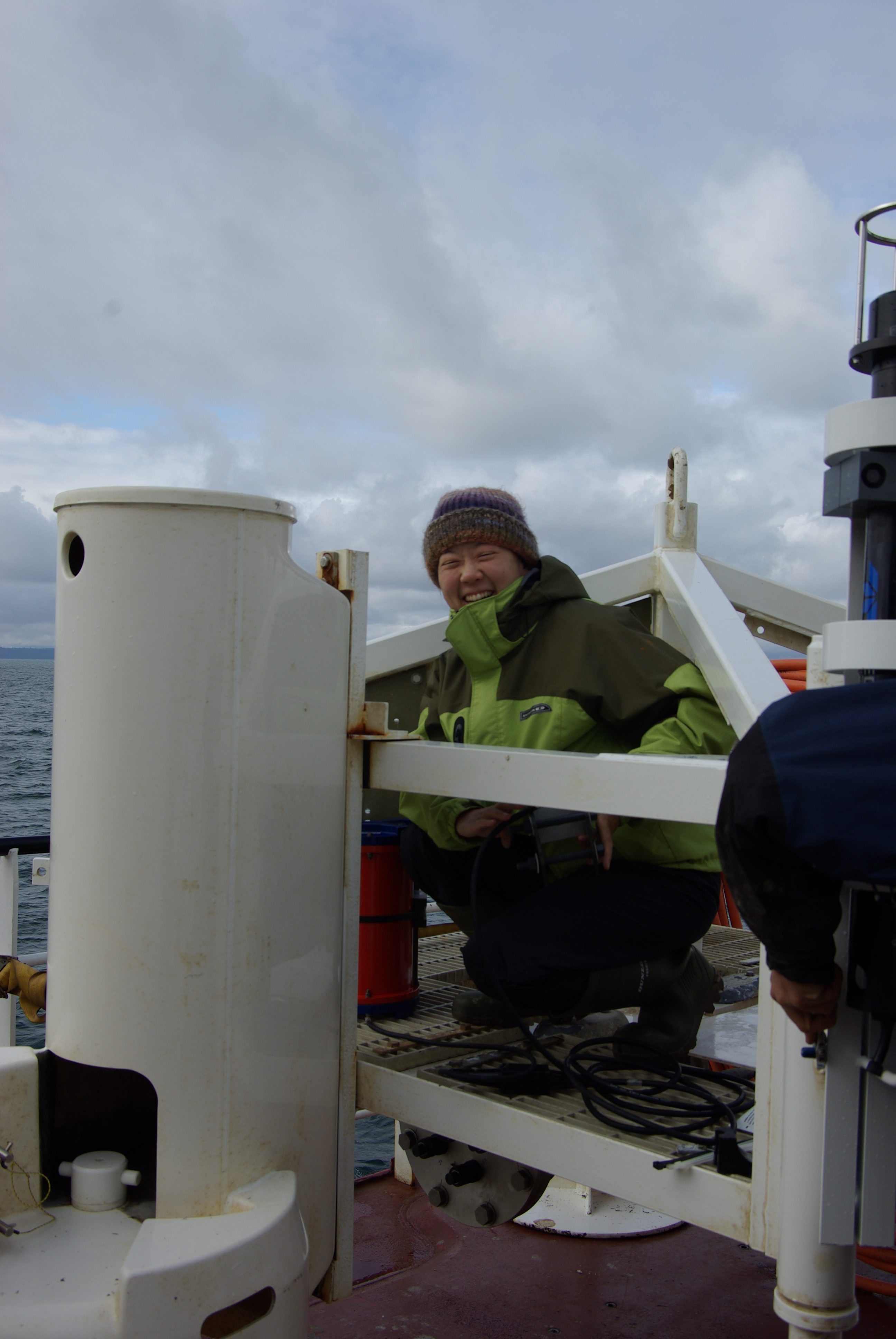Posts Tagged ‘Early Career Highlight’
Graduate Student Cruise Opportunities
Opportunities abound for graduate students to have hands-on experience aboard the OOI deployment expeditions in 2020. The first opportunity is during the spring Endurance Array deployment aboard the R/V Sikuliaq. as part of the UNOLS Cruise Opportunity Program. The Endurance cruise will run from 31 March-15 April 2020, departing from and returning to Newport, Oregon. Applications to UNOLS are due by 28 February 2020.
Students currently completing (or who have recently completed) a degree in a field of oceanographic research are eligible to apply. Those selected will learn about the functional aspects of seagoing work, while helping to deploy and recover oceanographic moorings, profilers, and gliders off the Washington and Oregon coast. Students also will assist in CTD (conductivity, temperature, depth) casts and acquisition of data while underway. Other specific assignments can be developed based on students’ expertise and interests.
To learn more and to apply for the Spring 2020 Endurance Array cruise, visit UNOL’s Cruise Opportunity Program. Other OOI array deployment cruises are being planned for the fall, so stayed tuned for more exciting opportunities later this year.
Read MoreEarly Career Highlight – Mei Sato – Using sound to unravel how animals change their behavior in complex environments
“Having all of those sensors available at the same time as bioacoustics data is a huge opportunity for me and other scientists,” says Sato. “It is not just biology or physics, it is the coupling that is so critical. I think the OOI will provide a big opportunity for us to answer questions in this gap.”
Read MoreEarly Career Highlight – Haley Cabaniss – Studying Oceans and Volcanos in America’s Breadbasket
“The thing that makes oceanography accessible in Illinois and any place inland,” says Cabaniss, “is that we have these awesome datasets like the OOI. Anyone anywhere in the world can go online, grab these datasets and start playing with them.”
Read MoreEarly Career Highlight – Dax Soule – Using the OOI to Build Paths for Success in His Students and His Research
The OOI is like a fire hose with data pouring out,” says Soule. “It’s just there, regardless of whether anyone is using it. If you are brave enough to lean in and just take a sip, just grab a tiny fraction of that data, well that’s enough for a research project right there.”
Read MoreEarly Career Highlight – Veronica Tamsitt – Taking hold of opportunities in the Southern Ocean
To Tamsitt, the OOI is a game changer in the Southern Ocean. “In the air-sea flux community, there are almost no measurements in the Southern Ocean except from ships,” says Tamsitt. “The OOI Surface Mooring is the southernmost mooring ever deployed.
Read MoreEarly Career Highlight – Wu-Jung Lee’s journey into ocean sound from dolphins to bats and back to the sea
“One of the reasons I first got interested in the OOI data was because it is free and available to the public,” says Lee. “Once I started working with the data, I realized just how special it was. I spent all of my time for several months on the OOI echosounder data.”
Read MoreEarly Career Highlight – Cassandra Alexander – Oceanographic research experiences at a landlocked undergraduate teaching university
“The Ocean Observatories Initiative really opens it up for students to be able to do a lot of different things with the ocean data,” says Alexander. “As long as you can think of it, you can explore it.”
Read MoreEarly Career Highlight – Kanieka Neal – From Maryland to Massachusetts, pushing her chemistry comfort zone
“The OOI is a great resource for students,” says Neal. “It’s not too time consuming, comes right to your inbox, and is very organized so I could pick it up really quickly. It’s amazing that the data are right at your fingertips; you can just go in and get it.”
Read MoreEarly Career Highlight – Brendan Philip – From a life on the sea surface to exploration of the seafloor
“It’s a 25-year program and you have committed to sailing every year to service your arrays,” says Philip, “that is a tremendous opportunity for students and researchers on board to do research that leverages the OOI instrumentation. The OOI is more than just data streaming to shore, it is also about the additional science you can do while you are out there.”
Read MoreEarly Career Highlight – Hilary Palevsky and the Irminger Sea Biological Pump
“I wanted to study the ocean’s role in climate and how it takes carbon out of the atmosphere,” says Palevsky. “My goal was to look at the balance between biological, physical, and chemical processes and how they allow the ocean to take up carbon.”
Read More









